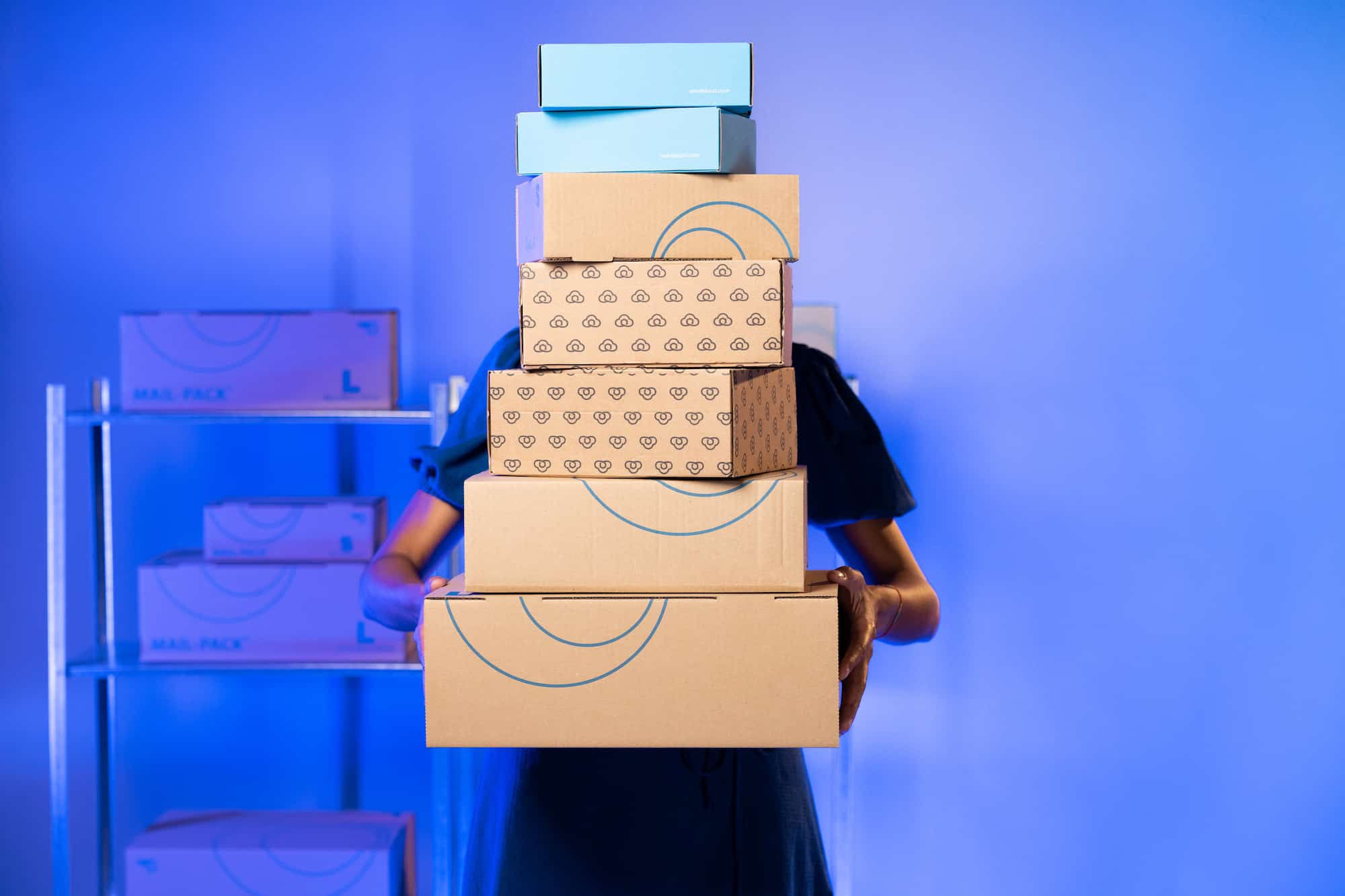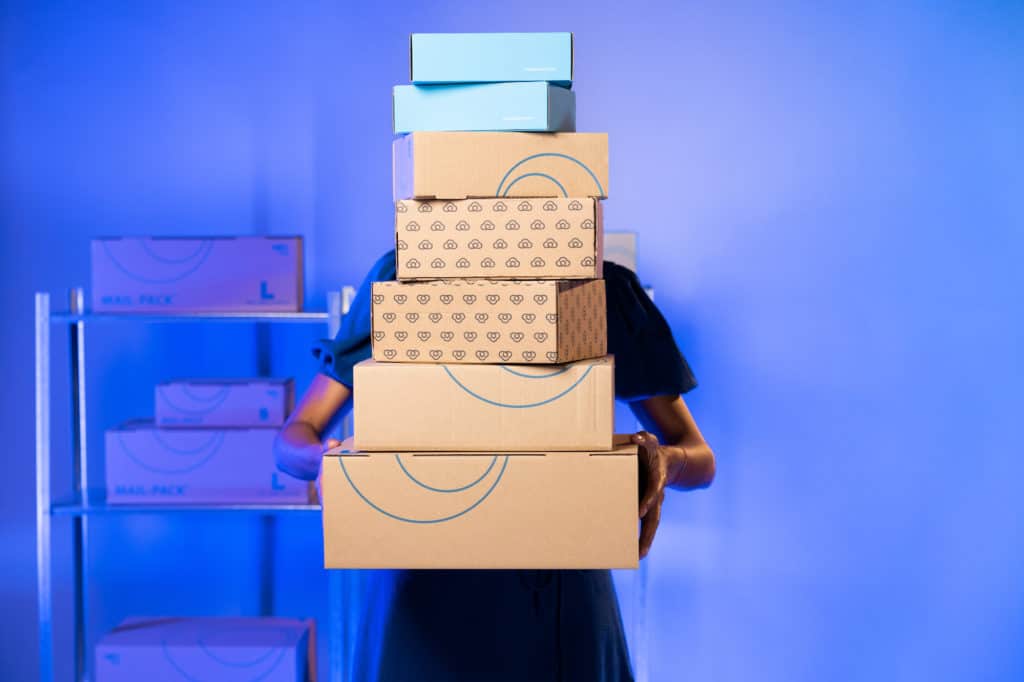If you’ve been in the e-commerce industry for some time, you know that delivery delays are inevitable. No matter how hard you try to avoid them, they’re going to happen from time to time.
While you might not be able to control delays, they can negatively impact your online store’s reputation, making it hard to land new customers and retain existing ones.
Ultimately, delays can lead to dissatisfied customers, bad reviews and, in the worst case, even a drop in sales.
Luckily, you don’t have to let delays ruin your business. In fact, there are a couple of things you can do to minimize the impact of delivery delays on your bottom line.
In this post, we will highlight the most common causes of delays, how to tackle them and how to communicate clearly to your customers.
Table of contents
What is a delivery delay?
In a perfect world, package delivery would occur on time without any issues or delays. But, in some instances, shipments can arrive with damage, faults, and incorrect attributes.
If your tracking status says “delayed,” that means an unforeseen logistic issue occurred and the delivery date will be postponed to a later time.
According to research we conducted amongst 6000 European consumers, 2 in 5 customers recently experienced a delivery delay. Delays are therefore commonplace in the world of e-commerce.
What is causing shipping delays?
While delays are the last thing any retailer wants to face, sometimes they’re unavoidable. Here are the most common reasons for shipping delays:
- Delays due to inaccurate shipping information
- Shipping delays due to external factors
- Delivery delays due to weather
- Shipping delays for Christmas
- International shipping delays
Delays due to inaccurate shipping information
When customers give a misspelled or incorrect address, or when the retailer doesn’t document the customer’s details properly, carriers might not have enough information to correctly deliver a parcel.
Errors on a shipping label can cause delays, surcharges or in the worst case a parcel never arrives at all. This is a pity, as delays due to inaccurate shipping information are unnecessary and can be avoided.
While it can be a lot of work to check each and every shipping label manually, it might pay off to invest in a proper shipping automation tool. Platforms like Sendcloud can help you automate the entire shipping process, thus minimizing potential errors.
Shipping delays due to external factors
There is a lot going on in the world right now: inflation is hitting a new record, job openings have reached an all-time high and fuel prices are constantly rising…
Meanwhile COVID-19 positive cases and global labour shortages are contributing to delivery delays.
Without people to carry out tasks essential to delivery, delays are inevitable. While labour shortages are impacting carriers on a global level, in the UK the government has even started a national campaign called ‘Generation Logistics’ for new staff.
Recent years have learned us that global events like the COVID-19 crisis can have a huge impact on the supply chain, and thus it’s good to keep in mind that external factors can have a massive impact on delivery delays.
Delivery delays due to weather
From freezing conditions on the road to storms at sea, bad weather can create chaos at all stages of shipping.
For carriers, safety is always priority number 1. With weather, road shut-downs, inevitably end up causing delays due to slow transits.
As frustrating as it may be for customers when weather conditions result in delays, there is only so much carriers can do to ensure timely delivery.
Shipping delays for Christmas
Online businesses often experience spikes in orders during the holiday season. Especially events like Black Friday and Christmas can cause an increase in parcel volume that can overwhelm carriers.
As a result, during the holiday season delivery delays can happen at a time when shoppers most want to have their items arrive on time.
While carriers usually scale their operations during the holiday period, it’s also essential for retailers to prepare themselves. On time communication is key, but a multi-carrier strategy might also be worth considering.
International shipping delays
Did you know 34% of online consumers is afraid to order internally because delivery might take too long? Congestions in airports and customs are some of the leading causes of international shipping delays.
Luckily, you can massively decrease the delivery time of international orders by partnering with express carriers or using direct-injections to offer parcels directly to the local carrier of the country-of-destination.
Next to this, customs issues are amongst the main issues causing international delays. Consequently, it’s crucial your customers paperwork for international shipments is properly and correctly filled in.
By studying your international shipping strategy closely, you can definitely decrease the amount of international shipping delays to a minimum.
Holiday delivery delays 2022
Holidays are prime time for e-commerce, and the industry often experiences huge spikes during this period. Consequently carriers are often fully booked during the peak season. As a result delivery delays may occur.
Make sure to do your homework on time. Check in advance the maximum number of parcels that your contract allows you to send and on which days there are no deliveries. This way you can spot potential challenges in time and think of a solution, like a multi-carrier strategy.
How do you deal with delayed deliveries?
Unfortunately, as an online business you don’t have full control over the entire shipping process. Especially during hectic times, delays may occur.
Dealing with delivery delays is one of the biggest challenges online businesses face in 2022. Even if a delay isn’t your fault, customers will see it as a problem.
Consequently delivery delays impact online businesses on multiple levels. Not only do delays result in lost revenue, in the long run they can also damage your brand trust.
Fortunately, there are a number of things you can do to anticipate on delayed shipments, for the carrier, for your customer and also for yourself.
It’s crucial to plan ahead when it comes to mitigating delayed deliveries. Here are five tips for dealing with delivery delays:
- Switch between carriers
- Add pick-up points to your checkout
- Keep your customer in the loop
- Extend your return period
- Think about shipping delay insurance
1. Switch between carriers
Instead of shipping with one carrier, it makes more sense to combine several carriers.
We have been recommending this for years, because consumers are increasingly demanding freedom of choice in their deliveries. Consumers want to decide for themselves when, where and how an order is delivered.
A smashing 71% of online consumers claims flexibility in delivery is key to them.
When you combine multiple carriers, you can use different shipping options from multiple carriers.
Not only does this allow you to offer customers the perfect mix of carriers in the checkout, it also spreads the risk of delivery delays.
If there are delays with one carrier in a certain region, you can easily switch to another.
With Sendcloud you can easily switch to another shipping option and/or carrier with one click, allowing you to be resilient at all times.
Be aware when choosing a different carrier or shipping options, as size and weight requirements vary from one carrier to another and you don’t want to deal with surcharges.
2. Add pick-up points to your checkout
Having an order delivered to a pick-up point has a 100% delivery guarantee. After all, the carrier can deliver multiple parcels in just one attempt.
Since shipping to a pick-up point is very efficient, it is usually cheaper compared to other shipping options. On top of this, it is more sustainable as the delivery van has to make less stops.
All in all, delivery to pick-up points is a good choice in the battle against delays. By shipping to pick-up points we can decrease the workload for carriers a bit by decreasing the amount of stops.
At Sendcloud we work with multiple carriers and therefore you can choose from a wide selection of pickup points in the checkout. There is always one close to your customer.
Did you even know that in Europe, there is always a pick-up point within a 3 km radius? In the Netherlands the radius is even less!
3. Keep your customer in the loop
Good communication with your customers is always important, but even more so with a possible delay. If you already expect delivery delays, make sure to communicate clearly about this on your website.
Customers like to be informed every step along the way. Therefore it is best to keep your customers pro-actively informed of updates regarding the delivery.
Shipment tracking can reassure customers that their order is on its way, even if it’s delayed. You can even use tracking notifications to explain the reason for any delays.
According to research we recently conducted amongst 6000 European customers, only 4 in 5 customers got notified about their most recent delay and in one third of the cases only after the estimated delivery date.
By using tracking notifications, you increase customer satisfaction and you avoid unnecessary questions for your customer support department. A win-win!
4. Extend your return period
We all know returns are a pain in the ass and you might not want to think about the potential risk of returned orders before they have even been delivered…
Nevertheless, it’s undeniable that delivery delays are also impacting the return flow. Not only will a delayed delivery impact the return time, in extreme cases the order might not even be relevant to the recipient anymore…
While it is often thought that a longer return period results in more returns, the opposite is often true.
Consumers become ‘attached’ to products at a certain point and that actually reduces the likelihood of returns.
In addition, a longer return period can help to boost conversions. In fact 40% of European consumers will not order if the return period is shorter than 30 days. Another 26% even think the return period should be at least 60 days.
All in all, extending your return period might be a good decision in order to decrease the number of returns. On top of this, it’s also a nice gesture during the peak season to spread the workload a bit for carriers!
5. Think about shipping delay insurance
This tip is not an immediate solution for delays, but is certainly worth considering sending parcels insured.
When millions of parcels cross the sorting belt, the chance of a lost parcel unfortunately increases.
You can always start an investigation, but if you parcel is is lost and the shipment is not insured, you will never receive compensation. Next to this, you must wonder if you want to leave your customer in the dark all this time…
By sending a parcel insured, you cover this risk. Via Sendcloud you can get insurance for any desired amount, at a low rate.
How do you respond to a delayed delivery customer?
Communicating dekivery delays to your customers is vital to creating an optimal customer experience. We’ll consider the best approaches in this section so that you know what exactly to do.
1. Be honest about your capabilities
One of the best ways to respond to your customers is to set clear and realistic expectations, especially for order delays.
Let them be aware of the challenges you might be experiencing with delivery times rather than leaving them in the dark. For example during the holiday season, you know carriers might get overloaded so you can already prepare your customers for this.
Overall, being practical and letting your customers know what to expect will help them build their trust and confidence in you.
A lot of businesses only inform customers about the delivery time after an order is placed. We actually advise to already communicate about this early on in the buying process, so customers know what to expect.
Make sure to communicate the expected delivery time clearly on multiple pages on your website, for example on the homepage, in a FAQ-section about delivery and of course on the product page itself. This way you avoid bad surprises afterwards.
2. Send a shipping delay apology email
Nothing keeps a customer’s mind at rest than a merchant who proactively communicates with them. Customers appreciate honesty and will be more understanding if they know what’s going on.
You could practice this by sending tracking emails like order confirmation, shipping notifications, and post-purchase messages.
But of all the different tracking emails, a shipping delay apology email might actually be the most important one.
Our research shows that 1 in 3 customers would already contact an online store a day after the estimated delivery date. Imagine how many questions your support team might get during peak season…
By communicating proactively about shipping delays in an automated tracking email, your customers know you have their best interests at heart.
Ideally, you already inform customers about the delay before the expected delivery date, so they don’t wait at home empty-handed.
Next to this, we advise to explain the reason for the delay and consider offering compensation for the added waiting time.
3. Think about shipping delay compensation
Although consumers are not entitled to compensation when an order is delayed, it can be a good idea to think about this in order to increase customer satisfaction.
After all, a happy customer is a returning customer. Offering discounts codes is a good way to show customers you care, even when things don’t go according to plan.
Shipping delay compensation could be anything from a percentage off their next purchase to free shipping on their next order.
By offering discounts you help lower customer’s frustration surrounding late delivery and you increase the chance on a recurring purchase. A win-win!
Prepare for shipping delays in 2022
Unfortunately the harsh reality is that shipping delays are inevitable in the world of e-commerce. Nevertheless, that doesn’t mean you have to let them ruin your business.
By being proactive about delays with your customers and investing in a flexible shipping strategy, you can offset the impact of shipping delays and keep your business thriving!








